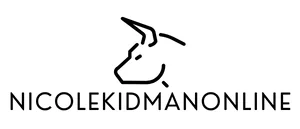Table of Contents
ToggleLichen planopilaris. Sounds like a fancy dish at a French restaurant, right? Instead, it’s a hair loss condition that has affected many, leaving them feeling frustrated and uncertain. But, as with any journey, some brave souls have turned their shadows into success stories. This article is here to share those victories, illuminating the path forward for anyone grappling with this condition. Whether it’s persevering through treatments or building a supportive community, success is not just a destination, but a journey worth sharing.
Understanding Lichen Planopilaris

Lichen planopilaris (LPP) is a relatively rare inflammatory condition that primarily targets the scalp. It falls under the umbrella of lichen planus, which affects the skin and mucous membranes too. In LPP, hair follicles become inflamed, leading to hair loss and discomfort. Imagine your scalp being the stage and LPP the unwelcome performer stealing the spotlight. Most often, it creates patches of hair loss, and while it can seem daunting, understanding it is the first step toward managing your health.
Many enthusiasts in scientific research have been dedicated to uncovering more about LPP, revealing insights about its autoimmune tendencies and potential triggers. On some occasions, doctors suspect that genetic predispositions and certain medications might play a role in its development. Notably, stress levels can exacerbate symptoms, an unexpected twist, considering how often life throws curveballs. Summarizing it, LPP may present challenges, but understanding it is half the battle. For those experiencing this treatment journey, stay tuned: the empowering stories are just ahead.
Common Symptoms and Diagnosis
Identifying lichen planopilaris often begins with recognizing its symptoms. Common signs include scalp irritation, loss of hair in patchy areas, dry skin, and potential flaking. Some individuals might experience redness on their scalp that resembles a sunburn. It’s vital for anyone suspecting these symptoms to consult with a healthcare provider.
Diagnosing LPP isn’t as straightforward as choosing toppings on a pizza: it requires careful examination and possibly a scalp biopsy to confirm the presence of inflammation in hair follicles. Once diagnosed, individuals often feel a sense of relief that comes with closure, knowing what they are dealing with. Awareness is key here, allowing individuals to explore their options and prioritize their health.
Treatment Options for Lichen Planopilaris
When it comes to treating lichen planopilaris, a variety of approaches exist. Topical corticosteroids are often the go-to, designed to reduce inflammation. But, for some, oral medications might be recommended, such as corticosteroids or immunosuppressants, to tackle more severe cases. It’s like having a toolbox: the right tools can make all the difference.
But wait, there’s more. Some patients have found relief through natural remedies and lifestyle adjustments. Incorporating a balanced diet and stress management techniques can significantly impact symptoms. Consultations with dermatologists and other specialists can help determine the best treatment plan tailored to individual needs. The journey may require patience, but with the right strategy, success is attainable.
Personal Success Stories: Overcoming Challenges
Nothing resonates quite like personal experiences. Countless individuals have faced lichen planopilaris head-on, transforming their challenges into stories of strength and resilience. Take Sarah, for example: after struggling with LPP for years, she discovered the power of community support. By attending local support groups and sharing her journey, she found not only understanding but practical advice that helped her navigate her symptoms.
Then there’s Jason, who was initially defeated by the emotional toll of hair loss. Through the use of effective treatment options and encouragement from loved ones, he documented his battle through a blog, offering insight and a beacon of hope for others. Each story has its unique struggles, but the common thread remains, the power to overcome is within reach, and sharing stories inspires and uplifts others on similar paths.
Community Support and Resources
Support networks play a critical role in the journey with lichen planopilaris. Engaging with community groups offers a space where shared experiences flourish. Online forums, local meetups, and social media groups provide platforms for individuals to discuss their challenges and triumphs. Whether it’s sharing coping strategies or simply venting frustrations, connecting with others makes the journey a little less lonely.
Also, various resources exist to help educate and guide those affected by LPP. Websites, informational pamphlets from dermatologists, and associations dedicated to autoimmune conditions can offer a wealth of information. Finding the right support can make an immense difference. Remember, no one needs to feel alone in this journey.




